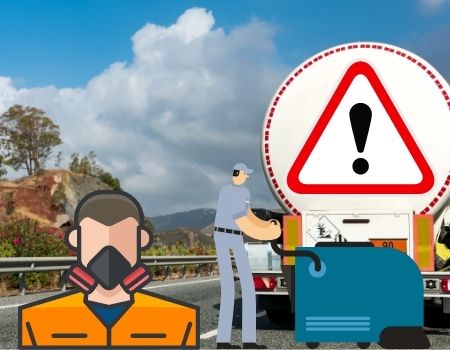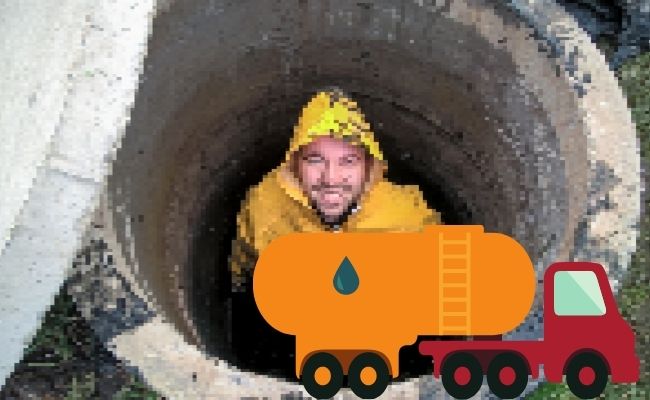Working with tanker trucks may be hazardous. There are many ways you can get hurt, and it seems like facilities don’t care about anything but the bottom line – that they’re not being sued or paying out settlements for accidents while on duty. We are not talking about vehicular accidents here, but their operations that involve transporting fuel and other volatile liquids.

The deployment of tanker trucks for carrying and storing chemicals comes with several risks. One is that they have a lower air pressure than ambient atmosphere, which can cause asphyxiation in people who might be on top of them or inside their tanks.
Tank cleaning is also required on chemical and product tankers because the sludge level reduces the useable tank capacity. The tank operator then has to flush the tank to restore its optimum utility. The industrial tank cleaning size is forecast to grow due to rising recognition of the problem of maintenance work for the industry’s healthy operation, safety, and prolonged functionality, as well as increased use of industrial clean up in different solutions such as oil tanks, water tanks, and chemical tanks.
Asphyxiation is a danger that can occur during tank cleaning operations. The best way to avoid this peril, and other dangers of the job for that matter, is by wearing safety gear such as gloves and masks when cleaning tanks or operating machinery nearby where there are risks of sparks being emitted from nearby activities.
A recent study found that over a quarter of employers allow workers to enter tanks without testing atmospheric conditions or completing confined space entry permits. Out of 500 respondents, 27% said they allowed their employees to go into tanks without first checking if there is toxic gas present and carrying out any necessary precautions for entering hazardous spaces. Such as getting an oxygen tank ready before going inside because it is quicker than doing all those tests every time someone wants to access it. OSHA has released what comprises permit-required confined space:
- Any space where there might be a harmful or potentially dangerous atmosphere present
- Spaces that include a substance that might overwhelm an incoming person’s breathing
- Spaces that have inward-curving walls or flooring that slope gradually and narrow into a smaller area, trapping or suffocating workers
- Other significant physical risks present, such as equipment without machine guarding or exposed live wires, in the work area
- The employer is responsible for identifying such areas and informing employees who may be exposed to them of their presence, location, and potential risks.
The real danger is not in the tank itself but rather from what’s on its surface, things like leftover volatile chemicals or sludge. These are dangers you don’t want your employees coming into contact with because they could be detrimental to their health for years down the line – not just now! Here are the OSHA-recommended protocols on how to avoid violating their permit-required confined space mandate:
- Always ensure you have the approval to access permit-required restricted areas, and never enter without being trained and with no authorization.
- Review, comprehend, and adhere to employer policies and procedures before entering permit-required restricted places, and be familiar with how and when to depart.
- Before entering a confined space, determine the presence of any physical dangers.
- Testing and monitoring should occur before and during the actual entrance to test for the presence of oxygen, flammability, toxicity, or the presence of explosives.
- Comply with entrance protocols and make use of the company’s fall protection, air monitoring, and rescue protocols. Ventilation, communication, and lighting devices should also be in strict compliance.
- Ensure that you are in constant communication with a qualified attendant, either visually, by phone, or through two-way radio. With this monitoring system, your attendant and entry supervisor can order you to leave, and emergency personnel is alerted if entrants need assistance.
Asphyxiation means suffocating due to lack of oxygen caused by an inability to breathe freely (not enough air). When people suffer from carbon monoxide poisoning, they lose their ability to think clearly. This condition happens because toxic gas builds up inside the body so preventing it from using oxygen effectively. Aside from carbon monoxide, here are some typical industrial chemicals included in the list of harmful airborne contaminants released by OSHA:
| Chemical | Threshold in ppm |
| Toluene | 200 |
| Xylene | 100 |
| Turpentine | 100 |
| Naphtha | 100 |
| Aniline | 5 |
| Hydrogen peroxide | 1 |
| Sodium hydroxide | |
| Gasoline |
During cleaning operations, workers who enter tanks risk exposure to hazardous fumes from industrial chemical raw materials, toxic dust, and other things. This procedure can be dangerous because of the asphyxiating fumes and because these fluids can explode if they come into contact with an open flame, which might happen if someone’s clothing comes into contact with electrical sparks. Here are some important reminders when permits are required when working inside a confined space:
| Factors | Permit-Required Confined Space | Non-permit Required Confined Space |
| Oxygen | <19.5% or >23.5% | 19.5 to 23.5% |
| Flammability | >10% lower flammable limit (LFL) | <10% lower flammable limit (LFL) |
| Toxicity | >50% permissible exposure limit (PEL) or threshold limit value (TLV) | <50% of PEL or TLV |
| Examples | Manhole entry points; wastewater pipelines and tanks | Air handlers, attics, crawl spaces |
As you should know, asphyxiation does not always cause death at work of this kind because there is no guarantee that it will immediately kill anybody—sometimes, individuals live. In contrast, others die on exposure without having enough oxygen, but it can lead to lasting brain damage.
In the United States, there are hundreds of workers in occupations that expose them to hazardous chemicals. These workers risk their health because they do not know how toxic these substances can be when exposed to a person’s skin and inhaled through one’s nose or mouth for long periods.

On August 2nd, a worker in Ohio nearly died while cleaning a tanker truck that transported toluene. The incident prompted the regional OSHA office to propose an initiative targeting employers who work in businesses commonly involved in tank cleaning operations, such as trucking, rail and road transit, restoration operations, resource retrieval, and waste disposal providers. In their region alone, they have accounted for 23 worker deaths and 97 similar incidents since 2016. These incidents are why the regional office will conduct routine inspections now in Illinois, Ohio, and Wisconsin and those under federal jurisdiction in Indiana, Michigan, and Minnesota, to avoid these tank cleaning fatalities from rising.
OSHA urges employers in the industrial sector to make attempts to detect, mitigate, and eradicate confined space risks. OSHA recommends that all industries create a comprehensive plan for identifying potential dangers associated with working in confining space environments and taking proactive measures on how they can be reduced or eliminated before an incident occurs.
Leave a Reply